What are Cilia?
The term cilia is Latin for "eyelashes." Common in single-cell organisms, these hair-like structure wave to move the cell around or to move something around the cell. Cilia also are present on most cells in the human body. Some tissues in the body, such as the Fallopian tubes in women and the trachea, also have a special type of cilia that help transport substances along the tissues' surfaces.
Types of Cilia in the Body
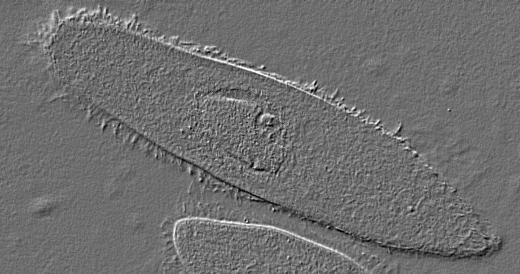
In the body, cilia on the surface of tissues are responsible for protecting a person from germs in the lungs and for pushing an ovum through the Fallopian tube, among other tasks. These cilia are called motile cilia, and they are found in groups and beat in waves. Primary cilia, on the other hand, usually are found only one at a time on cells.
Structure
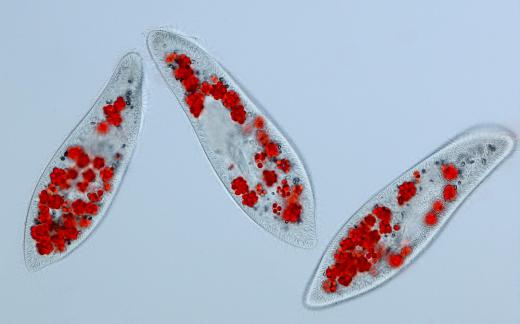
The structure of a single cilium is much like a tube, and its long fibers are called microtubules. These microtubules often pair up to form doublets, which in turn form a ring. The cross-section of doublets of microtubules looks like a figure 8, because the two microtubules stick together along a line. Nine doublets form the larger ring in what is known as a 9-2 pattern. When kinesin binds to one side of the doublets and not the other, the cilium flexes and curves, similar to the way a person's skeletal muscles contract.
Functions
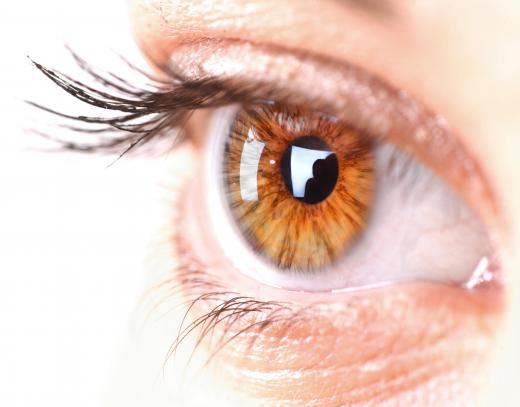
Single-celled eukaryotes, which are organisms with cells that have a nucleus, often use cilia to move through liquid. This type of organism is surrounded by a cytoskeleton, made of protein filaments that allow the cell to hold its shape. A cilium attaches to the cytoskeleton of the cell with a basal body, the way a root attaches hair to human skin.
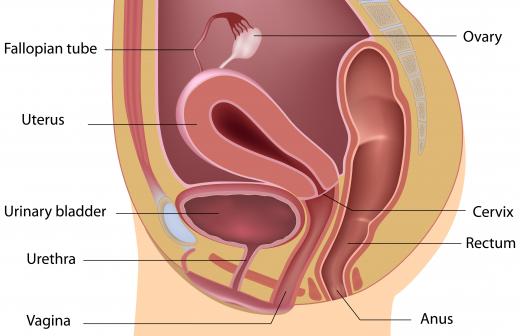
The rhythm of waving cilia is controlled by centrioles, which are organelles located inside the cell wall. Mitochondria, other units inside the cell, provide adenosine triphosphate (ATP), a source of cellular energy, for the cilia. The ATP directs the chemical kinesin to bind to certain parts of the cilia that control their movement. Thus, the cilia are able to beat or essentially swim their way through viscous liquid.
Flagella
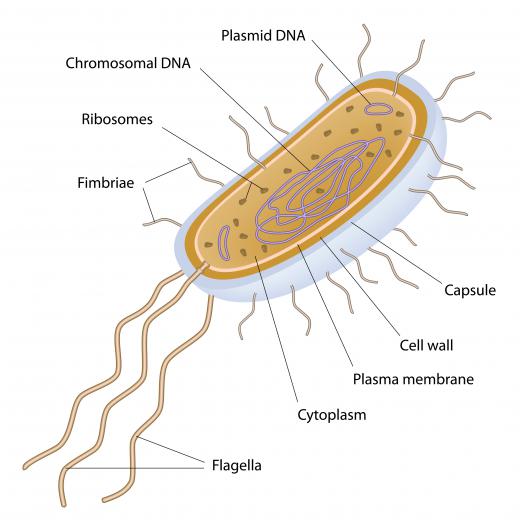
Similar to cilia, flagella are longer such hairs, usually found in ones or twos, such as the tail of a sperm. They share many characteristics with cilia, but they also occur on prokaryotes, which are organisms with cells that do not contain a nucleus. Some eukaryotes that use cilia and flagella to move are also found in ferns, on algae, on bacteria and inside many animals. This adaptation originally allowed independent cellular creatures, such as paramecia, to move around in search of food, rather than wait until food came to them. Cells that are part of larger systems have continued to use cilia to their advantage.
AS FEATURED ON:
AS FEATURED ON:
















Discussion Comments
People who smoke for a long time can actually kill their cilia. This leads to the development of smoker's cough, which my uncle had for years before he died.
He seemed to stay sick with one respiratory illness or another. The cough had become chronic, and there was nothing that could be done at that point to repair his cilia.
I've read that cilia in the trachea are what help move phlegm into your throat so that you can swallow it or spit it out. Without cilia, I guess we would all get pneumonia and possibly die!
There have been times when I've had bronchitis, and the coughing has been constant and overpowering. However, it has also been productive, thanks to the cilia.
Coughing like that gets exhausting over time, but the alternative would be suffocation. The cilia evacuate the phlegm like emergency workers canvasing a disaster area!
@orangey03 – I learned in biology class that cilia and nose hairs are two different things. Nose hairs are just hairs, and they do trap debris to protect the body. However, cilia are located deeper within the nose, and their function is not what you would expect.
They translate smells to the brain. So, when an aroma enters your nose, it has to reach the cilia before your mind can figure out what the smell is.
Aren't nose hairs cilia, too? I always thought they served to capture debris and germs to keep stuff like this from entering the body.
Where are cilia found?
This was great! Thank You Landy! i feel your pain. i too cannot get pregnant.
thanks. it is really decent and detailed information. i appreciate your your sacrifice. i was reading cellular physiology then i got confused about the structure of cilia. Thanks a lot.
Thanks! I had an assignment on this, too! When we had to relate it to the superhero. This helped me a lot!
Thank you, I missed school all last week because I went to Aruba and I have a huge test tomorrow and this helped me a lot. Thanks!
i was doing an assignment about cilia, and this really helped me out a lot.
I'm doing a project about cilia, and this helps me out. Thanks. (:
thank you. i really appreciate the website.
This site worked perfectly for my human anatomy class. Thanks.
this website is really great. thanks for the help with my work.
Thanks for the info if it wasn't for this website I wouldn't know most of this stuff.
This Is Honestly, The Best Info I Got Out On the Internet, thanks.
That is great information to know, thanks for your advice, I really appreciate it.
Yes it does.. To be accurate it squeezes against the endoplasmic reticulem and encloses the nucleus thus allowing the cell wall to explode.
Hey I'm just wondering how the paramecium respires. Through their contractile vacuole?
I need this kind of information for a science project, too. Thanks "landy"
thanx for the info. i couldn't find this info like anywhere else and i need it for a science research project. this was really helpful. so yeah thanx again:-)
I have been diagnosed with having bronchiectasis. And i struggled to fall pregnant. I have been told that there may be a connection. If they suspect that the cilia in the lungs are "sick" / unproductive, would this be the case for all places where cilia is present? Meaning, the cilia may not be working in the productive side??
Post your comments